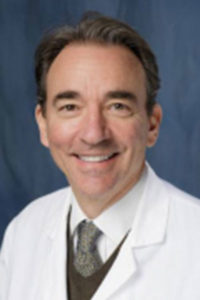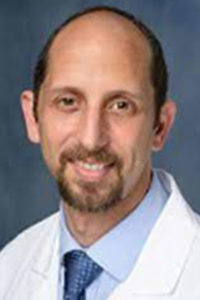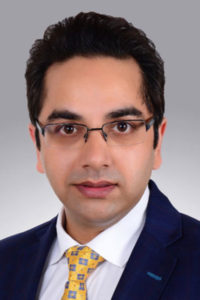
Emerging research is providing important new insight into the complex relationship between non-alcoholic fatty liver disease (NAFLD) and type 2 diabetes, which was discussed by a panel of experts during the Saturday, June 4, session NAFLD in Diabetes—An Overlooked Complication? Diagnosis and Emerging Therapies.
The session was livestreamed and can be viewed on-demand by registered meeting participants at ADA2022.org. If you haven’t registered for the 82nd Scientific Sessions, register today to access the valuable meeting content.
Kenneth Cusi, MD, Professor of Medicine and Chief of the Division of Endocrinology, Diabetes, and Metabolism at the University of Florida, Gainesville, addressed the epidemiology and diagnosis of non-alcoholic steatohepatitis (NASH), an advanced form of NAFLD, in people with diabetes.
“Non-alcoholic fatty liver, which covers a spectrum from hepatic steatosis all the way to steatohepatitis and cirrhosis, has a wicked relationship with type 2 diabetes in which each gets the best of the other one,” Dr. Cusi said.

With NAFLD, diabetes becomes more difficult to control, he said. Cardiovascular risk goes up, as well as the risk of microvascular complications. And diabetes is the single most important factor for NAFLD progression.
“So, the ADA now recommends that if you have patients with diabetes, or prediabetes and elevated liver enzymes or fatty liver, you should look for NASH in those patients,” Dr. Cusi said.
Fernando Bril, MD, Fellow in Endocrinology, Metabolism and Diabetes at the University of Alabama at Birmingham, discussed the hepatic effects of pioglitazone and its role in the management of NASH in people with diabetes.
“When we look at the natural history of fatty liver disease, it starts in the adipose tissue and progresses to fat accumulation, inflammation, and advanced fibrosis, and pioglitazone seems to work in all the steps of this natural history,” Dr. Bril said. “It works in the adipose tissue, making it healthier. It decreases fat, decreases NASH and inflammation, and appears to decrease fibrosis or at least delay the progression of it.”
Additionally, he said there’s growing evidence that pioglitazone in combination with glucagon-like peptide-1 (GLP-1) receptor agonists and sodium-glucose cotransporter 2 (SGLT-2) inhibitors is likely to reduce potential side effects while maximizing metabolic benefits.

Mohammad Shafi Kuchay, MD, Senior Consultant in the Division of Endocrinology and Diabetes at Medanta Medicity Hospital in Gurugram, India, reviewed evidence supporting the use of SGLT-2 inhibitors for the treatment of NAFLD.
“We have a number of animal model studies of NASH where SGLT-2 inhibitors prevented the development of hepatic steatosis, inflammation, fibrosis, as well as hepatocellular carcinoma,” Dr. Kuchay said.
While randomized controlled trials are ongoing, he said some early findings suggest SGLT-2 inhibitors may prevent development of NASH fibrosis, perhaps in combination with pioglitazone or with GLP-1 receptor agonists.
“Not only this, SGLT-2 inhibitors might prevent development of cirrhosis, or may be used for the complications of cirrhosis,” he said. “Overall, SGLT-2 inhibitors seem to be promising for preventing or treating NAFLD. There are many important studies underway, and I believe there are interesting times to come for the use of SGLT-2 inhibitors in NASH.”
Jay D. Horton, MD, Professor of Internal Medicine and Molecular Genetics and Director of the Center for Human Nutrition at the University of Texas Southwestern Medical Center, discussed what the future of NAFLD treatment may look like.

“The bottom line is that the real underlying problem in fatty liver disease is insulin resistance, so my prediction and hope would be that anything that improves insulin resistance is going to have a positive impact in the end on the progression of fatty liver disease,” Dr. Horton said.
While there are a number of new drugs in the pipeline aimed at improving insulin resistance, he said the aim of future research will continue to be to better understand the mechanisms of NAFLD with the hope of developing more direct targeted therapies.
“We know what causes the fat to accumulate in the liver, but what we don’t understand yet is how and why that fat becomes bad in some individuals—that is obviously the holy grail of this disease,” Dr. Horton said. “Once that’s figured out, we can envision and come up with more targeted therapies where, instead of blocking all fat synthesis, we go in and we just block the production of whatever the bad lipid is.”
[sub-post-content]

